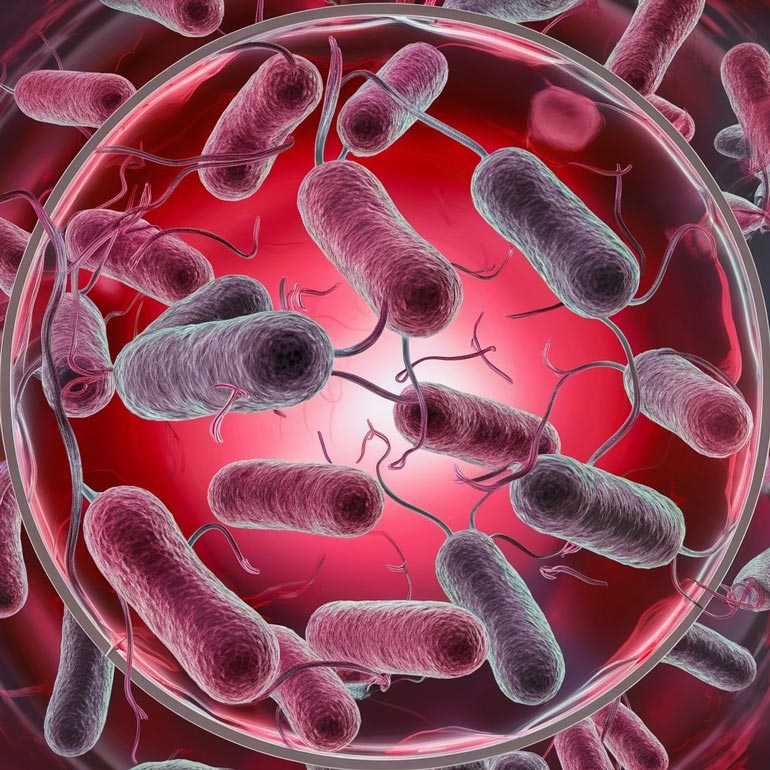Start 14-Day Trial Subscription
*No credit card required

Filing an E Coli Claim? A Look At The Factors Affecting Your Case
Learn about the key factors affecting E. coli settlement amounts as well as the causes, symptoms and compensation claims for E. coli infections. Ensure your claim covers economic, non-economic and potential punitive damages with expert guidance.
Coming down with a case of food poisoning isn’t anyone’s idea of fun; the symptoms can leave you feeling miserable, and this is before your trip to the doctor.
While you can become infected with E. coli bacteria at home, most cases are caused by tainted food sold at restaurants and grocery stores. In these instances, you can often file a compensation claim. However, there are factors affecting E. Coli case settlements that you should be aware of.
What is an E. Coli Infection
Escherichia coli (E. coli) is a bacterial group commonly present in animal and human digestive tracts. Several of the bacterial strains are harmless and their presence indicates good gut health. However, other strains can cause illnesses including respiratory disorders, urinary tract infections, and pneumonia to name a few examples.
Some E. coli strains produce what’s known as Shiga toxin, which is the most common cause of E. coli infections. According to the Centers for Disease Control and Prevention, an estimated 265,000 people are diagnosed with an E. coli infection annually.
Common Causes of E. Coli Infections
The majority of E. coli infections are caused by eating food tainted with the bacteria or drinking contaminated water. Some of the foods commonly associated with E. coli infections include:
- Water contaminated with animal and/or human waste: This is usually more of a concern in rural areas that depend on well water and septic systems. If waste from the septic system leaks into the well water, E. coli bacteria form and multiply.
- Unpasteurized milk and fruit juices: The pasteurization process effectively removes bacteria that can cause E. coli infections. While consuming and even selling unpasteurized milk and fruit juices isn’t illegal, the practice is strongly discouraged by healthcare professionals.
Diagnosing an E. coli infection typically involves submitting a stool sample for testing. If the tests come back positive for the bacteria, your physician will alert your local health department. The health department will begin an investigation to determine the source of the contamination.
Factors That Can Affect Your E. Coli Settlement
As long as you’re not responsible for your E. coli infection, there’s a good chance you can file a compensation claim.
If you’re wondering how you can be responsible for the illness, there are a few ways you can be the reason why you’re sick. If you knowingly purchase and consume unpasteurized liquids, you probably can’t file a claim for damages. The same applies if you’re not following food safety recommendations in your kitchen.
However, if you purchase a tainted product from a retailer or restaurant, you have a reasonable expectation that the item is safe for consumption. In this scenario, you should be able to file an E. coli claim. So, what factors go into determining your E. coli settlement amount?
Economic Damages
Your economic damages play a huge role in E. coli settlements. Damages typically include things like your medical expenses and lost income. If your illness is severe enough to prevent you from working, your claim can include these lost wages.
Medical expenses can include things like your initial doctor’s visit, prescription medication, and other treatments. If you end up spending time in the hospital, you can include this expense.
Non-Economic Damages
Economic damages are usually pretty easy to calculate. You tally up your receipts and bills and this is the amount you list on your claim. Since non-economic damages don’t have a price tag, calculating them can be complicated.
What are non-economic damages in an E. coli claim? They can include things like mental anguish, pain, and suffering.
You can use either the multiplier or per diem method to calculate your non-economic damages. Both methods are perfectly acceptable, however, one may be better suited for your claim. If you're not sure which method to use, your attorney can give you some guidance.
Both methods use the total of your economic damages. The multiplier method requires you to assign a number, usually between 1.5 and 5, to your pain. The number 5 indicated intense suffering. You multiply your economic damages by the number you gave your pain.
The per diem method can give you a higher total for your non-economic damages and this impacts your settlement amount. Take the number of days you’re in pain and multiply this by the total of your economic damages. For example, if your E. coli infection symptoms lasted 4 days and your economic damages are $100,000, your non-economic damages are $400,000.
Punitive Damages
You can’t claim punitive damages, as this type of compensation is only awarded by a judge or jury if your E. coli claim turns into a lawsuit in civil court. Punitive damages can impact your settlement by significantly increasing the amount.
However, most states have caps on punitive damages awarded in product liability cases. For example, Texas caps punitive damage awards at $750,000.
So, when are punitive damages awarded? They are typically awarded in cases where gross negligence is a factor. Punitive damages are levied to punish the defendant and discourage others from engaging in the same behavior.
Settling Your Claim Can Impact Compensation Amounts
Before you can file a lawsuit, you need to go through the negotiation process with the defendant’s insurance company.
Don’t be surprised if the first round of negotiations doesn’t go away; this is normal in liability claims. The same may even apply to the second and third rounds of negotiations. You submit a figure representing your damages and the insurance company counters with a lower offer.
Hopefully, you can settle without filing a lawsuit, but this may mean taking a lower offer than what you originally claimed. A quick tip is to look at the method used to calculate your non-economic damages. Sometimes, switching from the per diem to the multiplier method is enough to get everyone to agree to a settlement number.
The reason why using the multiplier method occasionally works better is your total non-economic damages are usually a little less. Something else to consider is working with an experienced liability attorney. They can help ensure your settlement is fair and cover your damages.



